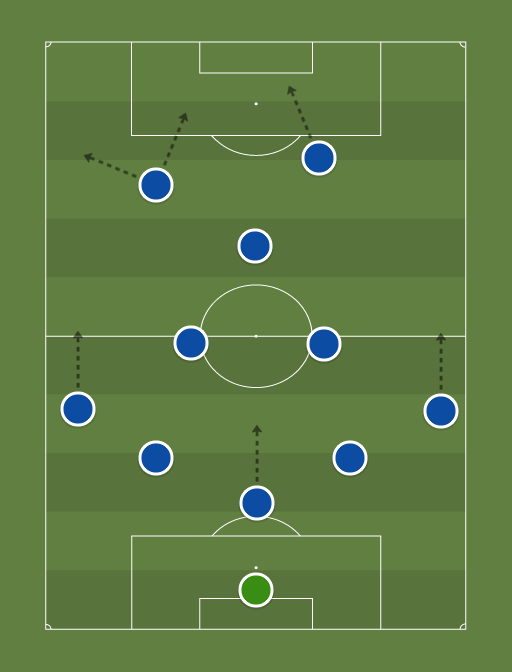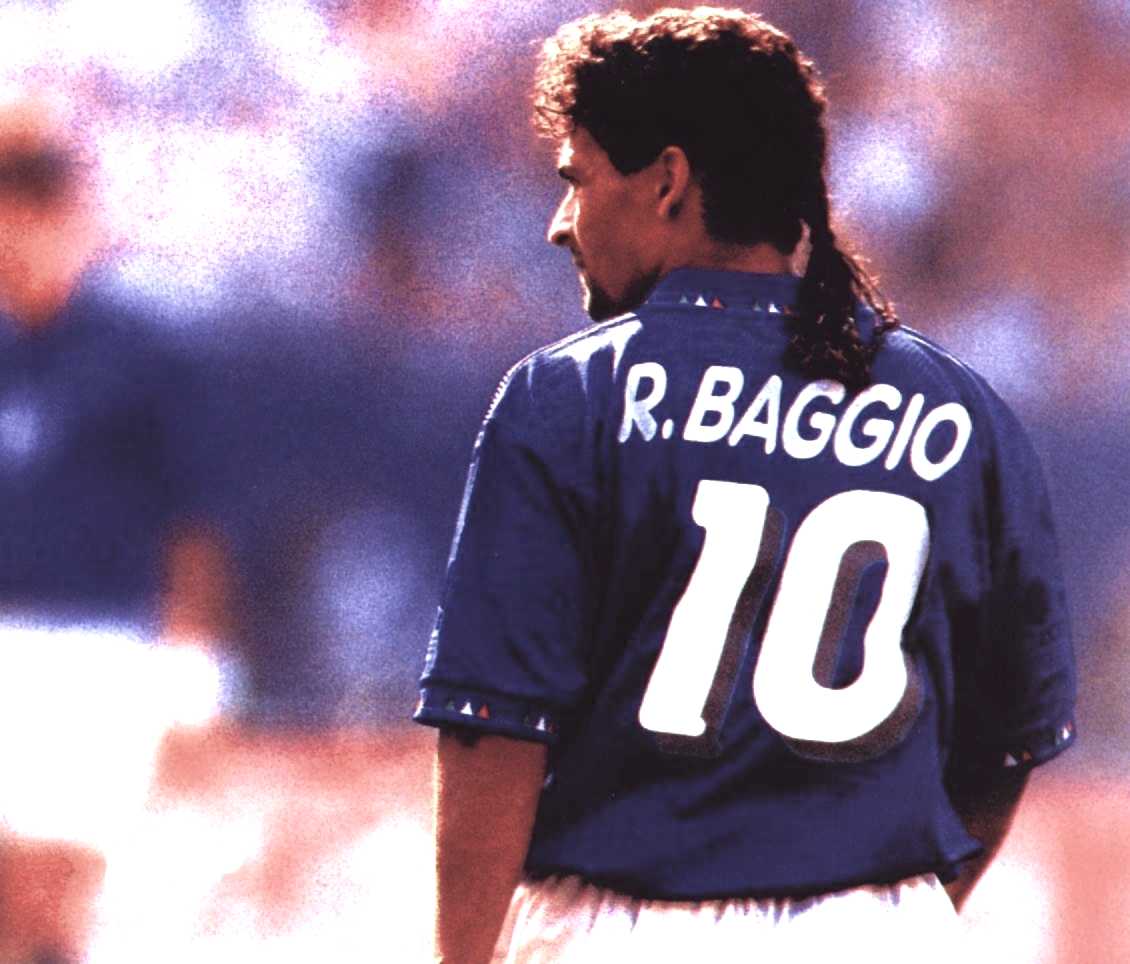

MJJ--------------------------------------------------------2mufc0
Tactics MJJ
Formation- 5-2-1-2 on paper but in reality, the side can easily and will transition to 4-3-3 at times with both kopa and baggio comfortable outwide.
Defensive Line- Normal
Playing Style- Direct, counterattacking football
Assistant Manager- Tuppet
Attack
A very fluid front three centered around two of the greatest players of the 90s in Batistuta and Baggio with one of the best french number 10s of all time, Kopa. All of my front three are excelled playing in an attacking trident and a 5-2-1-2 formation suits their attacking talents perfectly. Kopa's preference for the right wing augments baggio's for the left and both will cause havoc by drifting wide to double team the fullbacks and dragging centrebacks out of position.
Midfield
A very technically sound midfield which can retain the ball or do a lot of damage with quick transitions. Tigana was a complete box to box midfield player, excelling in quick transitions and one-two play and Voronin is the perfect DM to partner Tigana and kopa. Defensively solid but with excellent ball skills. The ball-playing ability of my midfield means that any one of midfield can play a game-changing pass if afforded enough time.
Defense
What's better than a German Wall? An Italian-German Wall with an Argentine Tractor. Three of my defenders can make an argument for being GOATs in their respective roles and position and the other two are the only defenders to win the Balon D'or in the last forty years.
Why I would win
- An impenetrable defense marshalled by Sammer with the best stopper and one of the best defenders in the history of football. Outwide I have two of the best wing-backs ever in Zanetti and Brehme.
- Campbell is the worst CB on the pitch and doesn't fit in an all time draft context.
- 2mufc0's offense doesn't have the goal-scoring needed here with none of his attackers being particularly clinical.
- Brehme + Kohler is as good a flank as you can ask for to neutralize Jairzinho, infact brehme by himself is well suited for his direct style.
- Ditto with Zanetti and Stoichov.
- On the other hand, kopa + baggio + batistuta will be too much for Campbell, Krol and Monti.
- Tuppet.
Formation 4-2-2-2
In this match I felt it was necessary to counter some of the the pressure points in MJJ's team so I'm going to go with a Magic Square 4-2-2-2 to isolate specific players and areas. The overarching idea is create a sense of 4v3 superiority in midfield - the trio of Kopa, Tigana and Voronin against the Square of Gullit, Rivelino, Van Hanegem, Monti to both control proceedings and disrupt his build up play. In doing this I think Sammer will also have to think twice before stepping up considering both Rivelino and Gullit are operating close to the boundary of midfield and the final third. Even though it's not a pure total football team any more, a lot of the principles regarding technical capability, fluidity and ability to interchange are retained with a beautiful blend of Dutch and Brazilian players.
Defence
Starting at the back Van der Saar commands the box an excellent goalkeeper as well as being great on the ball, his distribution is up there with the best. At the centre of the defence Krol will keep a close eye on Baggio as a legendary sweeper, and his interceptions and passing will be instrumental in building from the back and launching quick counters. Campbell partners him as the athletic and robust stopper able to cover for him - ideal blend of ice and fire, and Sol's uncompromising skill-set will be helpful against the physicality of Batistuta and his proficiency in the air - allowing Krol to mop the floor. To add, Campbell has a good record vs. Batistuta - with the latter substituted out in the 1998 World Cup as well as the 2002 World Cup, converting only from the penalty spot after Seaman's foul vs. Simeone:
Team details
Argentina: Roa; Vivas, Ayala, Chamot; Zanetti, Almeyda, Simeone (Berti 91); Ortega, Veron; Batistuta (Balbo 68), Lopez (Gallardo 68).
Argentina: Pablo Cavallero, Mauricio Pochettino, Walter Samuel, Diego Placente, Javier Zanetti, Diego Simeone, Juan Sebastian Veron (Pablo Aimar 45), Juan Pablo Sorin, Ariel Ortega, Gabriel Batistuta (Hernan Crespo 60), Kily Gonzalez (Claudio Lopez 64)
Nilton comes in at left back and Carlos Alberto takes up the opposite full back position, both are able to play-make from wide. They were are also fairly watertight defensively, providing the cover required when defending. Both were very intelligent players too and will time their forward runs and Nilton will usually not progress much further than the half-way line. As a testament to their greatness, they were elected to the World Team of the 20th Century, which is probably the highest honour out there, and ideally suited for a head-to-head on the flanks vs. Zanetti and Brehme:

Midfield
At the base of the midfield is Argentinian/Italian maestro Luis Monti, not only a great DM and marker, but also a perceptive passer of the ball to more advanced players - here he's primarily tasked with putting the brakes on Kopa given Monti's profile as a disruptor. To the left of him is van Hanegem the consummate Dutch box-to-box play-maker in the midfield looking to pick up the ball and play the attackers through. To add, he was also a battler and will engage in individual duels off-the-ball as required mostly against Tigana.
Gullit is the third midfielder and has a lot most license to attack and disorient Voronin in tandem with Riivelino, picking the ball up from deep positions he will cause havoc running at the opposition defence and making those off the ball runs into the box behind the forwards. Almost parallel to him is Rivelino, an integral part of Brazil's best team ever he was one of those players who can dribble you in a phone booth and was an example for the younger generation. He possessed enormous flair and talent with a cannonball of a shot (named “The Atomic Kick”).
I think overall the midfield is well structured with each player knowing their tasks, and being proven at a great level in said tasks - while also being proficient in multiple phases as an all-rounder. One of the trio of Van Hanegem, Gullit and Rivelino is going to have a free run based on numbers alone - and given the skill of all three I think any one them could be key difference makers.
Attack
For this game I'm going with a dual-forward setup to hopefully peel MJJ's central defence inside out instead of playing into his hand by having a 9 lead the line and getting countered by Kohler.
Stoichkov comes in as the forward on the left...
"He had an explosive turn of pace and supreme skill at speed. Many modern players sprint forward before slowing down to pass the ball or dribble past an opponent, but Stoichkov did everything at full pelt. With his short, stocky frame, it looked as if he was being filmed at 1.5x speed.
Stoichkov also had a fantastic touch, confident using every part of his boot to finish chances. The number of chips he scored indicate not only that ability to think at speed but also to carry out his next move before defenders or goalkeepers had even considered them a possibility. That afforded a powerful striker a crucial element of surprise.
The best way to perceive this extraordinary range of Stoichkov’s finishing is by watching the first two goals in this video clip. Both are very similar moves, the ball across the box for the striker running through the middle at pace. The first time Stoichkov goes for power, striking the ball with all his might into the top of the net. For the second, he casually slides it into the corner with his instep. How can you defend against that?"
And Jairzinho on the right - offering a lot of similar characteristics.
“Jairzinho was a bit like Neymar, playing from the side or centre and striking with precision. He had speed, strength and a lot of skill. When we played him a long ball, he was spectacular. He bumped, gained his space with his body, and still managed to shoot with skill.”
Thoughts on the game
In my opinion both teams are fairly strong at this stage of the tournament as expected and it could very well come down to specifics or minor organisational details.
- I have arguably the best DM in the pool (in the absence of Rijkaard, Desailly and Varela) to patrol the areas where Kopa will usually operate - which should slow him down considerably in theory. On the other hand, one of Gullit or Rivelino is going to afforded more freedom unless Sammer permanently steps up and goes into marking duty. There is great scope for Rivelino or Gullit to exploit positional or spatial lapses - and I would be wary of either given their attacking prowess.
- Kohler is particular was famous for facing target strikers - he was a great defender is general, but that was his expertise. Here he will be facing mobile forwards with lower center of gravity and higher speed or evasiveness.
- Flank battle is likely to be a wash so whatever MJJ needs to do should be through the middle and I've suitably fortified that area from that tactical standpoint - especially with regards to limiting Sammer from stepping up.
- MJJ's team might be a bit short on creativity especially with Monti keeping an eye on Kopa and playmaking Brehme facing Carlos Alberto on the flank. The onus might fall on Baggio and in this draft pool I can't think of a better and more intelligent defender to mind him than Ruud Krol from a physical or mental standpoint.










